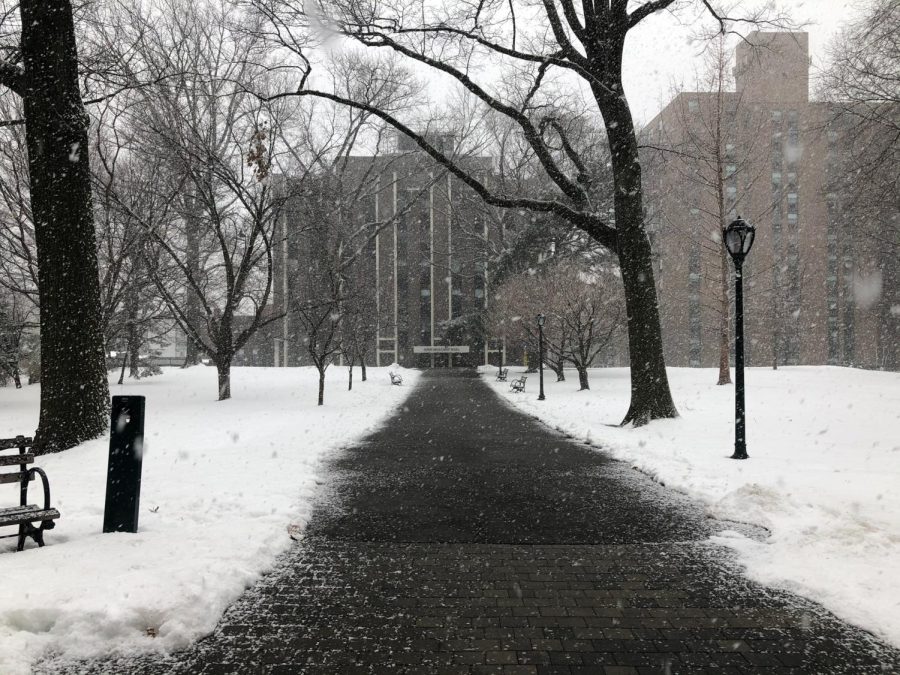A Norwegian Cure for Seasonal Depression
Growing up in Chicago, I am no stranger to brutal winters. Winters complete with frigid temperatures, black ice, snow piled up taller than me (not the pretty, aesthetic snow that lasts about five minutes — the mud stained sludge that freezes over and sticks around until March) and long, bleak stretches of nighttime. On one hand, the Windy City’s “polar vortex” can seem debilitating. But as the leaves turn from green to brown and the temperatures drop, I’ve grown to love the twinge of hominess and nostalgia in the frosty embrace of Northern Illinois.
Moving to NYC for college wasn’t too much of a change. I think every Fordham student has walked into Keating for an afternoon class and been surprised by how quickly it became dark. Oftentimes, I find the trek to Starbucks from my dorm not worth braving the blustery cold during the winter months (which my DCB thanks me kindly for).
In both states I’ve lived in, I’ve found an odd comfort in it being too cold outside to leave the house — an excuse to light way too many Target candles, put on more comfy layers and brew my favorite tea. I was pleased to learn there was a name for this optimism and it wasn’t just mindless romanticization.
Northern Europeans use a similar tactic to combat the long winters and short days. Norwegian hygge (hyoo-guh) has been the saving grace to citizens of Denmark, Norway and Sweden to combat seasonal depression in one of the darkest, coldest regions in the world.
First of all, what exactly is hygge, and where did the term come from? There’s no exact definition, but hygge roughly translates from Norwegian to “coziness.” The Danes adopted it around the 18th century, and have been liberal in employing it ever since. Characterized by indulgence, comfort and consolation, hygge quickly gained popularity. The Oxford English Dictionary describes hygge as “a quality of coziness and comfortable conviviality that engenders a feeling of contentment or well-being.” Hygge became popular in the U.S. in 2016 — a result of the popularity of “Little Book of Hygge – Danish secrets to happy living” by Meik Wiking. Wiking describes hygge as both a mindset and an atmosphere we create by embracing our circumstances and appreciating the little things. Think the “You HAVE to start romanticizing your life” TikTok sound. Things Wiking describes as hygge are “the art of creating intimacy,” “the absence of annoyance,” “cozy togetherness” and “cocoa by candlelight.”
Denmark is a country characterized by horrific winters and high taxes — probably the two most complained about things in the U.S. However, according to the World Happiness Institute, Denmark often is ranked “Happiest Country in the World,” and hasn’t dipped below the top five happiest countries in ten years. According to Wiking, while Danes are trademarked as the “happiest people in the world,” they are also the ones who make the most time for visiting with family and friends, and have been reported to be the calmest and most at peace. After looking at Denmark, it can be safe to say that the link between hygge and happiness and well-being isn’t a random one.
As not only college students, but college students in what’s viewed as one of the most fast-paced cities in the world, practicing hygge can seem silly, pointless and even impossible. But hygge is about the little things, embracing and learning to love life as it is. One of my favorite ways to create a “hygge” atmosphere is by treating my dorm room as my sanctuary. My salt lamp and mini-string lanterns (I am vehemently anti-overhead light), plants and lavender room spray make my space feel cozy, comforting and like a home away from home. If you’re an on-campus student, an electric candle and a plug in diffuser is the perfect way to achieve a “ResLife-friendly” cozy ambience. Another way I’ve embraced hygge is making both social and alone time a priority — which can be WAY easier said than done. Squeezing in a Starbucks date with an old friend between classes, hosting a self-care night in your dorm or even staying in to recharge instead of going out are all ways we can be more mindful and feel more at peace. Personally, I always try to brew my favorite tea (Tazo Earl Gray) and listen to my favorite cozy-calm playlist (LOTS of Evermore) while chugging through homework to make things that are stressful or mundane bring some comfort or peace.
Taking a moment to wind down and be mindful is something overlooked by so many, but the Dane’s have proven “stopping to smell the roses” can make all the difference. Especially in the gloomy winter months, prioritizing peace and mindfulness can be the key in staying sane this semester. In short — treat yourself. Do what feels good. Buy that new book you’ve had your eye on, don’t deprive yourself of spending time with friends or calling loved ones at home, keep your space tidy and make it a place you can relax in, treat yourself to your favorite latte and for the love of God — turn off your fluorescent overhead lights.








































































































































































































